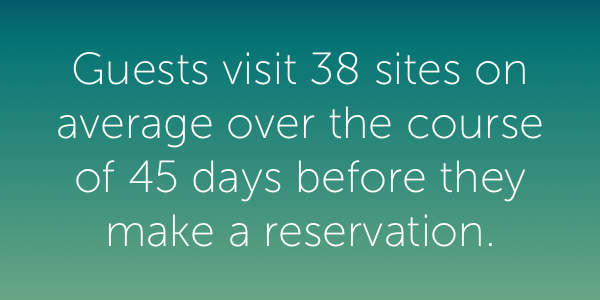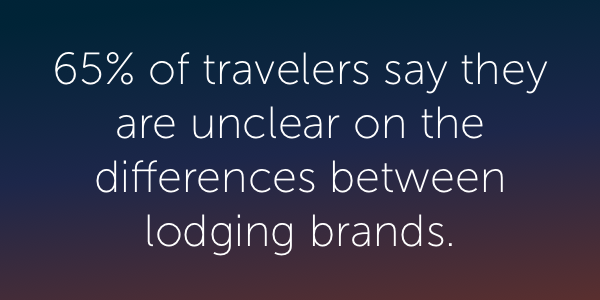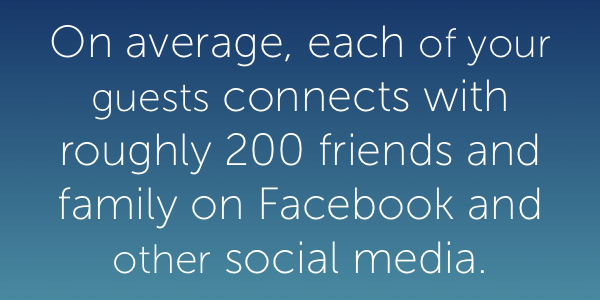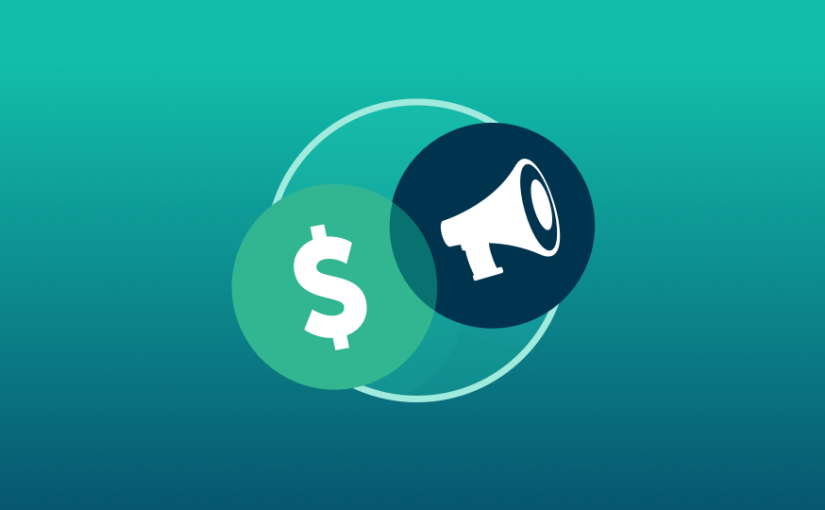Here’s a special guest post from one of the number of incredible innovators, subject matter experts, and just all-around big idea folks that we love hearing from. At Flip.to, we’re constantly looking to collaborate with people in the industry that inspire us. Get in touch and let’s do something amazing together.
From e-commerce to digital marketing, Tim Peter has been putting the web to work for hospitality for over 20 years. Today he’s sitting in on the Flip.to blog to share a bit of that knowledge. Check out his take on the truly impactful marketing team for your hotel that’s been hiding in plain sight.
I really hate marketing sometimes. I know that’s a weird thing to hear from a guy who does marketing for a living. But the simple reality is that finding and attracting guests isn’t always easy. Far from it. Not only are you constantly competing with companies that possess a seemingly-endless mix of people, data, and budgets to chase down potential guests wherever they may be, but all of you compete with your customers for a tiny sliver of their attention. And that tiny sliver is only getting smaller every year.

Check this out: According to research from Expedia, guests visit 38 sites on average over the course of 45 days before they make a reservation. 38 sites! 45 days! That’s crazy, right? And, remember, that’s not 45 days prior to the stay date; it’s 45 days ahead of the booking date.
Seriously, what’s taking them so long? Why can’t they make up their mind?
Well, for starters, most of them don’t know where they’re going. Google’s Road to Decision study suggests that over half have no particular destination in mind when they get started, while 84% of travelers aren’t sure which brand they’re going to choose once they do.

Want an even crazier—and more troubling—stat? About two-thirds of guests don’t really understand the difference among the brands available to choose from. Sadly, this holds true even among many heavy business travelers. And the flood of information your potential guests face each day usually only adds more confusion, rather than simplifying the solution.
What you and your guests both need is someone who can help ease the guest decision process and cut through the cluttered content landscape, pointing out the benefits your property offers in a timely and efficient manner.
And, yes, that’s what your sales force and marketing team strive to do every day. Most do a pretty good job of it, too. But, let’s be fair. It’s really hard work (see above, for instance). Google’s made it more challenging to rank in search, favoring PPC ads over its traditional organic results. And as Richard Dunbar pointed out here on the blog recently, getting your content in front of guests on sites like Facebook has gotten both more difficult and more expensive due to the social media giant’s algorithm changes over the past couple of years. And even those messages that make it through Facebook’s filters are fighting for your guests’ time, attention, and action.
The simple fact remains that you’re competing against the hundreds or thousands of marketing messages that your guests see every single day. In such an oversaturated media environment, it’s no surprise that even well-trusted brands and long-standing relationships sometimes struggle to make an impression—to say nothing of close the sale.
Bet you’re hating marketing right about now, too.
But here’s the good news. You’ve got a secret sales force at your disposal, one who knows all about the exceptional experience and value your property offers and represents a trusted source of information to the thousands of potential guests you’re looking to reach every year. Even better, you don’t have to cover much overhead to put this secret sales force to work.
So, just who is this secret sales force?

Your current guests, that’s who. According to Nielsen, most people trust the recommendations they receive from their friends and family on social. And on average each of your guests connects with roughly 200 friends and family on Facebook and other social media. Your existing guests offer you a trusted connection with these potential customers.
Just consider the math for a moment. Let’s say you’re responsible for a 100 room hotel, that runs at 60% occupancy and hosts 1.4 guests per room each night. That’s almost 31,000 guests per year that you can put to work telling your brand story. Which, y’know, is a lot of people. And, even using conservative numbers about how many friends each has on social media, those 31,000 guests can reach millions of other potential guests on your behalf (since most of you probably hate math way more than you hate marketing, I’ve tucked that away down at the end of this post, but those numbers are real).
Facebook has made it plain that it plans to show its users more content from close friends and family. Put your guests to work telling your hotel’s story, and the friends and family Facebook favors will be the folks staying in your rooms every night. They’re the ones who can share compelling stories about how much they enjoyed their stay, highlight the outstanding value they received, and sell their connections on why they ought to consider your property too. Their posts on social get in front of their friends and family and provide you a trusted entry into a dialogue with those potential guests. That’s your secret sales force.
And it’s one you can’t afford to waste.
It’s no secret that guests have chosen for years to write reviews on TripAdvisor and booking sites, sharing the details about their stay with folks all over the world. Those reviews often drive valuable business for your brand. But why not put content like that to work for your hotel? How about getting your guests to share on behalf of your property to a targeted audience, instead of just about your property to some random bunch of strangers on the Web? This isn’t just about Flip.to (though, as you might imagine, the company offers a really great way of empowering your guests to tell your hotel’s story). This is a huge opportunity for you to reach new business effectively and efficiently, regardless of how you choose to engage them.
The simple fact remains that your secret sales force offers you a near-perfect opportunity to connect with potential guests. Their messages get seen and are trusted by your target audience. They’re well-informed about your value, and I don’t know about you, but it’s enough to make me fall in love with marketing all over again.
Appendix: The Math Behind the Hidden Sales Force’s Social Connections
According to Pew Research, 39% of “adult Facebook users” have 1-100 friends, 23% have 101-250, 20% have 251-500, and 15% have over 500 friends. So, using the lowest possible number of friends on Facebook per brand:
(39% x 31,000 * 1) + (23% x 31,000 * 101) + (20% * 31,000 * 251) + (15% x 31,000 x 501) = 4,618,070
Which, again, is a lot. What’s even crazier is if you use the higher number in each range:
(39% x 31,000 * 100) + (23% x 31,000 * 250) + (20% * 31,000 * 500) + (15% x 31,000 x 501) = 8,421,150
Note: Since we don’t know the upper bound of friends in Pew’s topmost group, I’m still assuming “only” 501 friends for the most connected cohort on Facebook.
And here’s the thing. Assume for a moment that these numbers are way too high, say maybe twice as high as they should be. Your guests still connect you with 2 to 4 million other people on Facebook alone. Pretty cool, eh?
